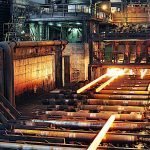The Canadian Wind Energy Association (CanWEA) is defending Ontario’s commitment to a “clean energy economy” against attack by the Progressive Conservative party. CanWEA says that “farmers and landowners, rural communities and new college graduates” could suffer if the PC Party private member’s Bill 39, called the “Ensuring Affordable Energy Act” were to become law in Ontario. The bill seeks a moratorium on further wind energy development, on the mistaken ground, according to CanWEA, that wind energy is responsible for increasing energy costs in Ontario.

Wind energy projects, Can WEA says, are providing jobs and a source of income for “literally thousands” of Ontarians in communities “from Chatham-Kent to Frontenac Island, Tilsonburg to Niagara,” which could receive “hundreds of millions of dollars in direct benefits” from wind energy projects. Students graduating in new renewable energy programs at several colleges in the province are currently graduating to “100 per cent employment” in the clean energy industry. But this could all end if the PC Party cancels new manufacturing and investment in the industry.
CanWEA has been forced to defend its position against another onslaught recently. The Fraser Institute released a report titled “Environmental and Economic Consequences of Ontario’s Green Energy Act” which CanWEA has said presented an inaccurate analysis of price increases in Ontario energy. Wind energy, CanWEA says, has helped deliver “hundreds of millions of dollars to rural communities—with little additional cost passed on to ratepayers.”
According to CanWEA, a different study shows different results. The Customer Bill Impacts of Generation Sources in Ontario, prepared by Power Advisory, shows that wind energy accounted for only “about 5 per cent” of the increase in a total customer bill between 2009 and 2012. Most of the increases in the cost of electricity are the result of jurisdictions upgrading “ancient electricity systems.” The Ontario Energy Board says that the nuclear industry alone has been responsible for 45 per cent of the increase in the cost of energy in Ontario since 2006. Only 6 per cent of that increase has been because of renewable energy.
CanWEA also cites a Pembina report which finds that renewable energy investment will “protect costs in the long term.” In the short term, prices will rise sharply, as old infrastructure is replaced, “regardless of the choice of electricity generation mix.”
One Ontario industry that has been benefiting from the construction of wind turbines is the concrete industry. Concrete has been the material of choice for wind tower foundations, according to NextEra Energy, a wind and solar energy developer. Concrete provides economic benefits to the communities where turbines are built because the concrete is produced locally. Each wind turbine requires 800 metric tons of concrete, said NextEra. The company is currently involved in eight wind projects in Ontario, worth $1.7 billion.
The currently installed 1,064 wind turbines in the province have used more than 370,000 cubic metres of concrete.

































